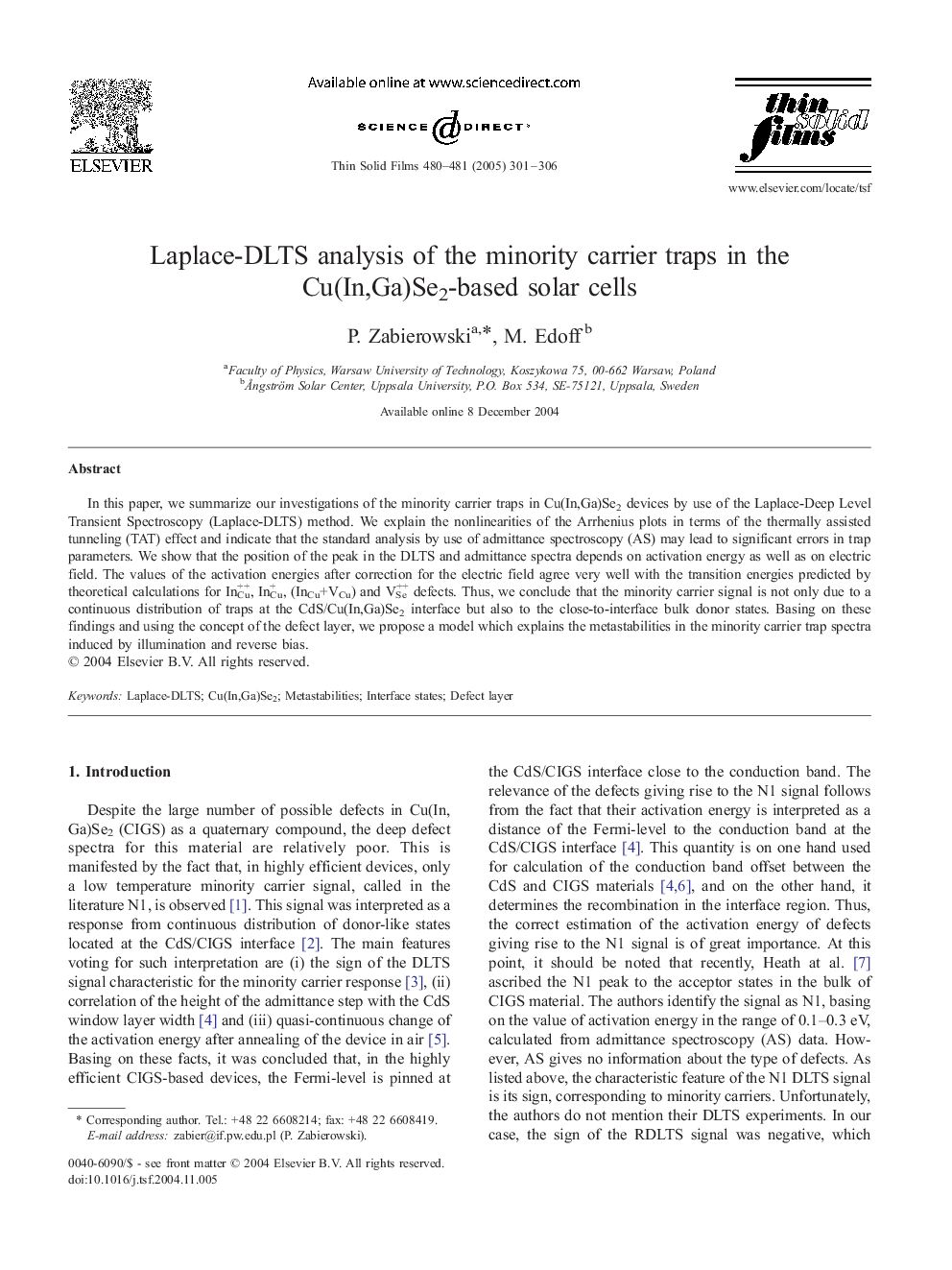| Article ID | Journal | Published Year | Pages | File Type |
|---|---|---|---|---|
| 1674866 | Thin Solid Films | 2005 | 6 Pages |
Abstract
In this paper, we summarize our investigations of the minority carrier traps in Cu(In,Ga)Se2 devices by use of the Laplace-Deep Level Transient Spectroscopy (Laplace-DLTS) method. We explain the nonlinearities of the Arrhenius plots in terms of the thermally assisted tunneling (TAT) effect and indicate that the standard analysis by use of admittance spectroscopy (AS) may lead to significant errors in trap parameters. We show that the position of the peak in the DLTS and admittance spectra depends on activation energy as well as on electric field. The values of the activation energies after correction for the electric field agree very well with the transition energies predicted by theoretical calculations for InCu++, InCu+, (InCu+VCu) and VSe++ defects. Thus, we conclude that the minority carrier signal is not only due to a continuous distribution of traps at the CdS/Cu(In,Ga)Se2 interface but also to the close-to-interface bulk donor states. Basing on these findings and using the concept of the defect layer, we propose a model which explains the metastabilities in the minority carrier trap spectra induced by illumination and reverse bias.
Related Topics
Physical Sciences and Engineering
Materials Science
Nanotechnology
Authors
P. Zabierowski, M. Edoff,
